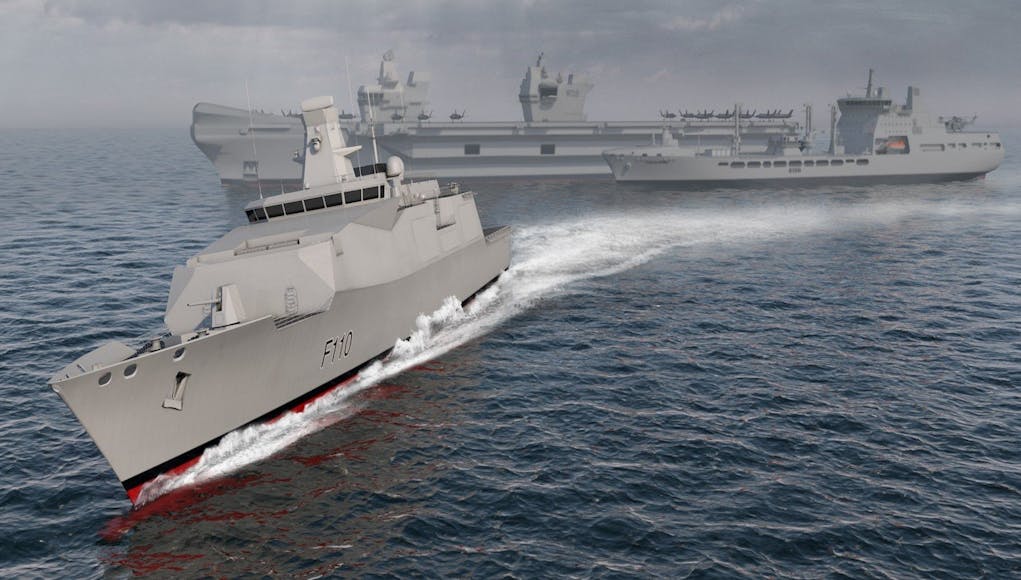In November, the Prime Minister announced surprise plans to develop a new Type 32 Frigate to expand the Royal Navy fleet. This was unexpected, so what actually is the Type 32 Frigate?
The Royal Navy already has two new types of frigate on order, the Type 26 and the Type 31 Frigate.
Parliament has taken a keen interest in the procurement of warships and the Commons Library has published several briefing papers on this topic, this article is sourced from them.

What are the Royal Navy’s current plans?
The Royal Navy’s existing fleet of thirteen Type 23 frigates will begin to leave service on an annual basis from 2023.
Frigates can be used in a variety of roles, including warfighting, maritime security, counter piracy and international engagement. Some vessels are designed for a specialist anti-submarine warfare role with a quiet hull.
They will be replaced by two new types of frigate:
Type 26 frigates
These will replace the specialist anti-submarine warfare (ASW) Type 23 frigates currently in service.
The Ministry of Defence has committed to buying eight Type 26 frigates and signed a contract for the first three in July 2017. The ships will be built at BAE Systems’ shipyards on the Clyde. The first in the City Class, HMS Glasgow, has an in-service date of 2027. The MOD says it expects to sign a contract for the second batch of five Type 26 frigates in the early 2020s.
- RNZN future frigate options.
- Royal Navy's Type 31e Frigate 'Not Worth Building' Unless It Can 'Fight to Survive'
- Navy planners consider replacements for ageing Anzac Class frigates
- Preparation Underway to Build Royal Australian Navy’s New Hunter-Class Frigates
Type 31 frigates
These will be general-purpose frigates to replace the non-ASW Type 23s. The MoD signed a contract with Babcock for five ships in November 2019. Manufacture will begin in 2021 with an in-service date of 2027. The overall programme cost is expected to be £2bn.
Echoes of 2015?
The Government made a similar surprise announcement about frigates in the previous defence review, the Strategic Defence and Security Review (SDSR), in 2015.
Rather than confirming the expected build of 12 Type 26 frigates, the Government announced plans for eight Type 26s, supported by five new general-purpose frigates (the Type 31s).
The SDSR said:
“We will also launch a concept study and then design and build a new class of lighter, flexible general purpose frigates so that by the 2030s we can further increase the total number of frigates and destroyers.”
The Prime Minister’s announcement of the new Type 32 frigates comes in the context of the current defence review.
The 19th of November statement on the integrated review also announced the review’s work would conclude in early 2021 and informed the House of Commons of its “first outcome“: an increase in defence spending of £24.1bn over the next four years.
What is the Type 32?
The first mention of a new Type 32 frigate came in the Prime Minister’s 19 November statement. He said: “We are going to develop the next generation of warships, including multi-role research vessels and Type 32 frigates.”
The Type 32 was not mentioned in the Government’s 2017 shipbuilding strategy, which overhauled the way the MOD procures warships for the Royal Navy. Nor was it mentioned in the review of the strategy published in November 2019.
Early speculation suggests they could be ‘batch II’ Type 31s, but not necessarily based on the Type 31 design. Several MPs have tabled questions on the Type 32.
More information may be provided in the integrated review or in the update to the 30-year Naval Ship Acquisition Plan, due to be published after the integrated review.
What will the new ships do?
In his statement, the Prime Minister spoke of plans to “deploy more of our naval assets in the world’s most important regions”. This may include Asia-Pacific. The Royal Navy has visibly increased its presence in Asia in recent years and HMS Queen Elizabeth is to sail to East Asia in 2021.
The Royal Navy has also begun to permanently base frigates overseas (in the Gulf). The First Sea Lord, Admiral Tony Radakin (head of the Royal Navy), has said forward presence is a priority, suggesting more ships could be permanently based overseas with crews rotating from the UK. The Royal Navy will also soon have five new offshore patrol vessels in service.
However, in the medium-term there remain concerns about the timing of the retirement of Type 23 frigates and the entry into service of the Type 26s and Type 31s. There is a potential shortage of frigates around the mid-2020s. There is also the question of crewing.
The Royal Navy is understrength by 5.9%, as of the 1st of July 2020.
It is not clear when the Government intends to bring the new Type 32s into service.

